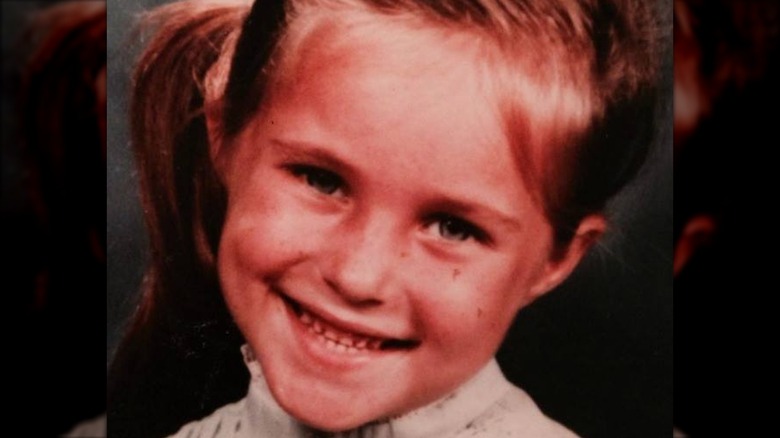The Disturbing True Story Of The Girl Who Saw Herself In A 'Missing Person' Milk Carton Photo
2017 saw the end to a missing child case that started way back in 1979. Back then, 6-year-old Etan Patz left home to catch the bus to school in New York City and simply vanished. It took nearly 40 years of hunting to find, try, and convict Pedro Hernandez for kidnapping and murdering Patz, and the killer was sentenced to 25 years to life. And while the Patz family waited decades for closure, their son's case helped kickstart what those who were alive in the 1980s might remember as the missing milk carton kids.
The Des Moines Register says that Patz and Des Moines, Iowa boys Johnny Gosch and Eugene Martin were the first to have their faces printed on milk cartons across the United States in 1984. So started the short-lived but highly memorable campaign of using milk cartons to help track down missing children. While the campaign's effectiveness at tracking down missing kids has been roundly criticized, it helped spawn the the National Center for Missing & Exploited Children (NCMEC), 1984's Missing Children Act, 1996's America's Missing: Broadcast Emergency Response (AMBER) alert system, and generally raised awareness regarding youth safety from that point on.
Out of all the success stories related to the milk carton campaign, the tale of Bonnie Lohman stands out. One day, at the age of 7, Bonnie couldn't read the words "MISSING CHILD" across the top of the milk carton at the grocery store. But she did recognize her own face. She herself was a missing child, and she didn't even realize it.
She was kidnapped at age 3
Details regarding the Bonnie Lohman case are lacking at this point, and sources often cite each other and repeat the same information in a vague, urban folktale kind of way. Nonetheless, we do know that she was kidnapped at 3 years old for unknown reasons and under unknown circumstances. But Bonnie wasn't kidnapped by a stranger. As the website for the "99% Invisible" podcast recounts, she was kidnapped by her own mother and raised with her mother and stepfather, completely unaware of the truth of her lost father. And because milk carton abductions focused on kidnappings by strangers, Bonnie's father had difficulties getting her face in print. This was only the first hurdle to overcome within the seemingly impossible task of locating his daughter somewhere in the entire world.
And we say "entire world" because Bonnie and her kidnappers moved around a lot when she was a child. From Saipan to Hawaii to Colorado, she didn't have the chance to settle down, explore, and even read until later in her development. This is why when she saw her own face on a milk carton, she couldn't read the writing above it. But strangely enough, her stepfather indulged her curiosity and cut out the photo. He let Bonnie have it if she kept the whole thing secret. She did, and this was the next step in the uncanny set of events that led to her recovery.
Bonnie's recovery and return to her father
Bonnie Lohman took her own milk carton picture, stuck in a box with the rest of her toys, and that was that. Or rather, it would have been if she hadn't brought the box to a neighboring house and forgotten it there. The neighbors saw the photo, realized it was Bonnie, and called the police. On the "This Is Criminal" podcast in 2017, "99% Invisible" host Roman Mars said the police "swarmed" the house of her kidnappers. Seven years old is old enough to leave memories as an adult, especially traumatic ones. She later described the difficulty of being handed back to someone that was, to her, essentially a stranger. "I remember being scared because I didn't know my dad," she said in an interview played on "This Is Criminal." "It sucked."
In the end, Bonnie's recovery represented a rare success story for the whole missing child-milk carton photo campaign. Approximately 5 billion milk cartons brought only a handful of children home. But as mentioned, the true strength of the campaign lived in its aftereffects and other programs that it spawned, which National Center for Missing & Exploited Children (NCMEC) says have aided 426,000 total children. No doubt that for those families who, like Bonnie, saw their children safely recovered, all the effort over decades of time was 100% worth it.


